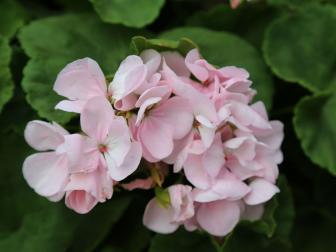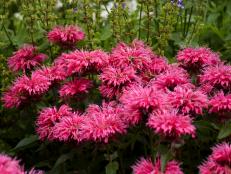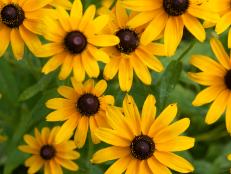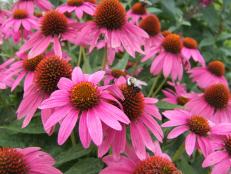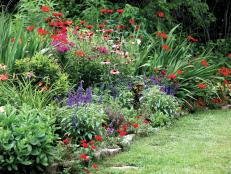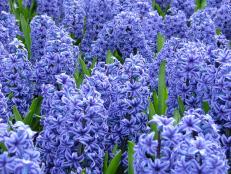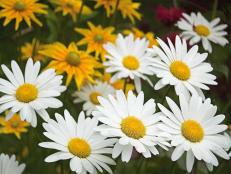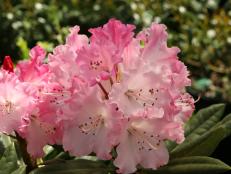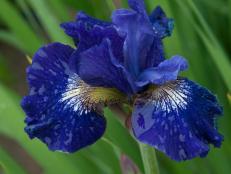Perennial Geranium Care: Your Guide to Growing Hardy Geraniums
Learn why perennial geraniums should be your new favorite plant. These hardy geraniums bring the color to low-maintenance plants.
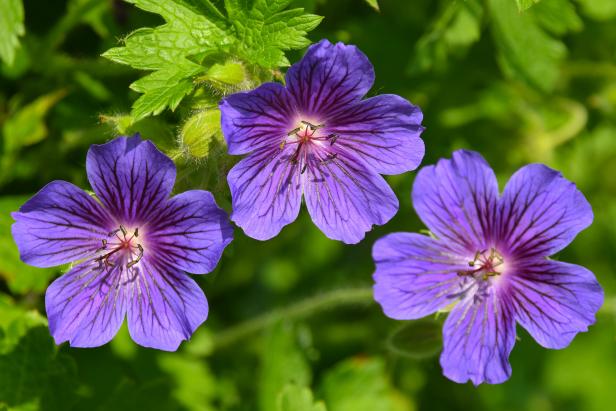
Shutterstock/WitoldS
What’s not to love about perennial geraniums? These tough-as-nails bloomers aren’t fussy plants, thriving in all kinds of growing conditions, including the dreaded dry shade beneath established trees. Deer, rabbits and other wildlife tend to leave perennial geraniums alone, as do pests like slugs and aphids. If you’re looking for a low-maintenance plant, consider perennial geraniums.
In botanical speak, these plants are true geraniums. Perennial geraniums comprise a large collection of more than 300 species and varieties that go by a host of names, including hardy geranium, wild geranium (Geranium maculatum), cranesbill geranium (Geranium macrorrhizum) and bloody geranium (Geranium sanguineum). The hardest part about growing perennial geraniums is choosing which one to plant.
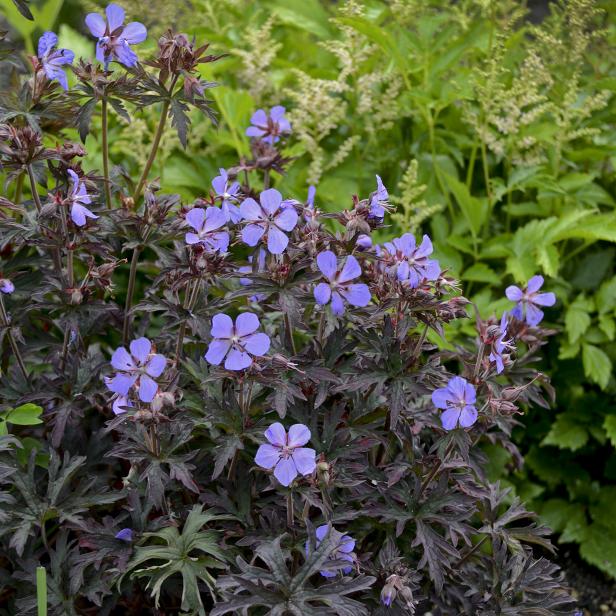
Perennial Resource.com
'Dark Reiter' geranium (Geranium pratense), a type of hardy geranium.
Colorful Flowers and Leaves
Perennial geraniums are a colorful bunch, unfurling leaves and flowers in a wide range of hues. Flower shades include pink, purple, red, burgundy, blue and white. Blossoms often have deeper toned veins, creating a whisker effect on petals. Many hardy geraniums bloom strongest from spring to midsummer. Geranium ‘Max Frei,’ a bloody cranesbill (Geranium sanguineum) type, and wild geranium (Geranium maculatum) fit this category. Other varieties, like Rozanne or Geranium ‘Johnson’s Blue,’ open flowers the entire growing season.
Hardy geranium plants have divided leaves that bring a fine texture to garden designs. Leaf colors might include green, burgundy, gold or near-black, like ‘Dark Reiter’ Geranium pratense, a type of cranesbill geranium (above). Some geraniums, like the native wildflower Geranium maculatum, have leaves that blaze with bright tones of orange, gold or red in autumn.
Plant size varies among hardy geraniums, from a ground-hugging 6 inches to more of a knee-high, 18-inch-tall plant. Some form tidy tufts in a planting bed, while others have stems that sprawl and crawl their way through the garden during the growing season. Perennial geraniums are usually hardy from Zones 5 to 9.
Growing Perennial Geraniums
Hardy geraniums typically grow best in semi-rich soil that drains well. Adding organic matter to soil at planting time is a good idea. Use your favorite locally available material, including things like compost, rotted manure, bark fines, dried seaweed or leaf mold. Avoid tucking perennial geraniums into soggy soil, especially soil that stays waterlogged over winter. Most types of geraniums won’t survive those growing conditions.
Each type of geranium plant has its own preferred amount of sun or shade. In general, most perennial geraniums grow well in full sun or part shade, although some, like wild geranium (Geranium maculatum), can grow in full shade.
For areas of full, dry shade (the kind you find beneath established trees), look to hardy geraniums like Geranium x cantabrigiense ‘Biokovo’ or the cranesbill geranium (Geranium marcrorrhizum) varieties. Do your homework before tucking a perennial geranium into full shade, though. If that’s not the ideal light condition for a plant, it won’t form as many flowers.
Hardy geraniums planted in full sun need more water than those tucked into shadier settings. Water plants early in the day so leaves can dry before sunset. This helps to prevent fungus diseases from forming on wet leaves overnight.
Fertilize perennial geraniums once a year in spring. You can use a slow-release plant food in really poor soils, but a 2- to 3-inch-thick layer of compost placed over soil should provide enough nutrients to keep hardy geraniums looking their best.
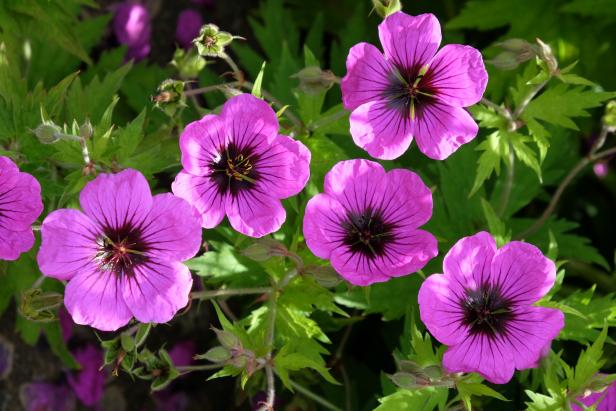
Shutterstock/Alexandra Glen
Hardy pink geranium 'Patricia.'
Pruning Perennial Geraniums
Once your hardy geraniums are established in the garden, they really need very little care. Some perennial geranium varieties tend to become straggly with long, lanky stems by midsummer. At this point, many gardeners use scissors or shears to cut plants back to 3 to 5 inches tall (cut stems to the basal growth, the tuft of leaves at the base of the plant). Plants respond to this apparently harsh treatment with a flush of new growth — and flowers. Cranesbill geraniums like Rozanne are good candidates for midseason pruning.
Many hardy geraniums spread by underground stems and self-sowing. They’re not typically invasive spreaders. Many gardeners let the plants self-seed and then transplant the young plants to where they want them. A light pruning (just removing the flowers and their individual stems) before plants set seed can help and/or prevent self-sowing.
How to Use Perennial Geraniums
Hardy geraniums are versatile in the garden. They blend beautifully into cottage style gardens, especially cranesbill geranium (Geranium macrorrhizum) and bloody cranesbill (Geranium sanguineum) types. The smaller forms fit neatly into rock gardens or along the edge of flower beds.
Native wild geraniums (Geranium maculatum) naturally occur along the forest’s edge and adapt well to woodland garden settings. Perennial geraniums create a colorful ground cover, and their pretty blooms beckon pollinators, making them a great addition to a butterfly or wildlife garden.
Geranium or Pelargonium?
Plants known as geraniums actually fall into two separate botanical groups. The true geraniums are the perennial types. The geraniums that most people think of when they’re out shopping for plants are the annual bedding types with lollipop-like flowers: a ball of blooms on a stick stem. These bedding plants fall into the botanical group Pelargonium. A host of other geraniums belong in the Pelargonium genus, too, including ivy geraniums, scented geraniums and Martha Washington geraniums.
Pretty Pelargonium 13 Photos
Endless pelargonium varieties are just one feature of the stunning botanical garden Wisley, outside of London.
One difference between the true hardy geraniums and Pelargonium geraniums is found in the seed capsules.
- The word "geranium" comes from the Greek "geranos," which means crane and refers to a narrow column that sticks up from the seed pod. The column looks like the narrow beak of a crane.
- Pelargonium comes from the Greek word "pelargos," which means stork and refers to the same column that sticks up from the seed pod. In this case, the column is fatter and resembles the broader beak of a stork.
The beak on a geranium or Pelargonium seed pod acts like a catapult, sending seeds flying—essentially flinging them across your garden. This is how hardy geraniums spread through a planting bed or along a stone wall.







